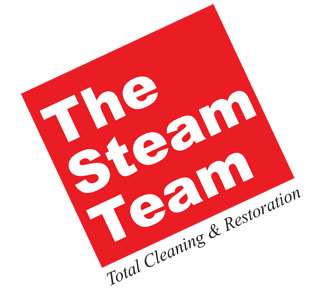Austin Texas Maid Service
Carpet Cleaning | Stain Tips | Repair | Pet Odor | Urine Removal | Carpet Protector
The following tips will give you some household remedies to lifting some of the tougher carpet stains. Each uses a series of cleaning solutions that, when applied in order, will help to remove carpet stains. Please contact us for specific questions.
Red Wine
Red wine spills result in an absorbed type of stain that is reddish or purplish in color and contains alcohol, sugar, tannin and various coloring agents.
Apply cool detergent solution, blot.
Apply ammonia solution, blot.
Apply vinegar solution, blot.
Apply enzyme detergent*, blot.
Rinse thoroughly with water, blot until dry.
Apply dry cleaning solvent, blot.
* CAUTION: Enzymes can damage natural fibers like wool. Use with care or call us.
Cosmetics
Cosmetics can include makeup, mascara, lipsticks, lotions and creams. Mostly they are pigments in dyes, fats, waxes and oils.
Scrape off excess (using a dull edge tool) and apply a paint oil and grease (POG) remover, blot.
Apply dry cleaning solvent, blot.
Apply detergent solution, blot.
Apply ammonia solution, blot.
Apply vinegar solution, blot.
Apply pressure to the spot with a spatula or the back of a tablespoon to work spotting solution deep into spot. DO NOT SCRUB as this may cause nap distortion of the fiber.
Rinse with water, blot until dry.
Dirt
Mud and soil are greyish, brownish, reddish or yellowish. They are absorbed and built-up types of stains that can contain soil with greases and oils, as well as clay and iron.
Brush or scrape off as much as possible.
Apply detergent solution, blot.
Apply ammonia solution, blot.
Apply vinegar solution, blot.
Apply pressure to the spot with a spatula or the back of a tablespoon to work spotting solution deep into spot. DO NOT SCRUB as this may cause nap distortion of the fiber.
Rinse thoroughly with water, blot until dry.
If stain remains, apply a paint oil and grease (POG) remover and dry cleaning solvent alternately, blot until dry.
Pet Soil & Vomit
Pet soil or vomit is a complex mixture of foodstuffs, saliva, stomach acids and digestive waste products. Sometimes, this mixture can stain the pile of a carpet or leave a persistent odor. Follow the tips below to cleanup the stain, but if that doesn't do the trick, call The Steam Team.
Immediately pick up/blot up as much material as possible using paper towels or a clean, white cloth. A tablespoon makes a good scraper if necessary.
Apply vinegar solution, blot.
Apply detergent solution, blot.
Apply pressure to the spot with a spatula or the back of a tablespoon to work spotting solution deep into spot. DO NOT SCRUB as this may cause nap distortion of the fiber.
Rinse thoroughly with cool clean water, blot until dry.
Coffee or Tea
Coffee and tea stains appear brownish with irregular edges. They may contain tannins, sugars, fatty acids, alcohols, oils, milk and cream. These stains darken with heat and age.
Apply detergent solution, blot. (Enzyme detergent* may be used if a dairy product was mixed in.)
Apply vinegar solution, blot.
Apply enzyme detergent, blot.
Apply pressure to the spot with a spatula or the back of a tablespoon to work spotting solution deep into spot. DO NOT SCRUB as this may cause nap distortion of the fiber.
Rinse thoroughly with water, blot until dry.
* CAUTION: Enzymes can damage natural fibers like wool. Use with care or call us.
Solutions used in tips
Detergent: A few drops colorless, mild detergent or dishwashing liquid in 1 cup lukewarm water.
Ammonia: 1 Tbls. clear household ammonia in 1/2 cup water. Always pre-test.
Vinegar: 1/3 cup white household vinegar in 2/3 cup water.
Enzyme Detergent: Mix enzyme detergent per instructions on package and allow to remain on stain recommended time. Do not overwet.
Paint Oil and Grease Remover: Dry cleaning solvents and paint oil grease removers are available at most hardware stores. Solvents contain volatile organic compounds and must be used in strict accordance with manufacturers' instructions. Use in well ventilated space and avoid products containing perchlorethylene—they are considered quite hazardous.


